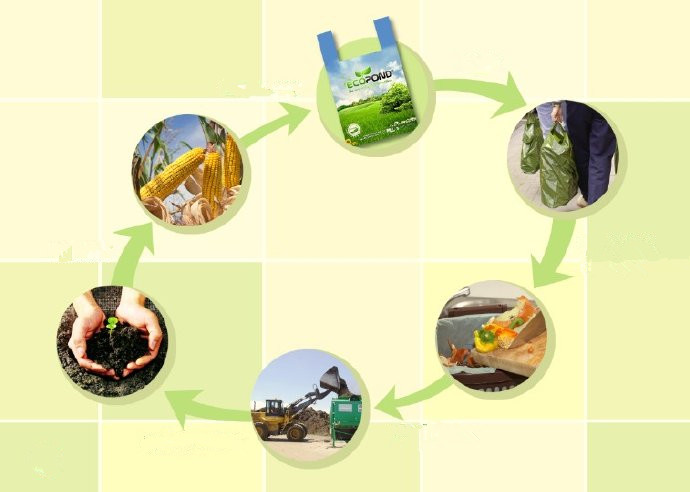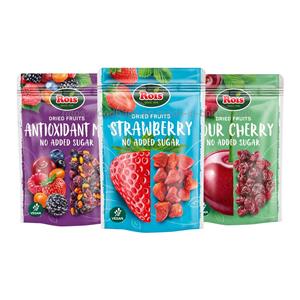Fullsun biodegradation knowledge

Fullsun biodegradation knowledge:Microbial decomposition of substances in nature does not have a negative impact on the environment. The degree of degradation is called the degradation index. The percentage of the degraded object or the amount of carbon dioxide produced by the microorganism indicates that the biomagnification refers to certain elements from the environment or compounds that are difficult to decompose in the high trophic organism in the same food chain. biodegradable garbage bags Concentration is higher than that of low-level trophic organisms. Enlarge the ecology, promote the economy with ecology, promote the green food industry, and promote the development of the tourism industry. The improvement of the local ecological environment affects the whole.http://www.fullsunbiotech.com/product/biodegradable-garbage-bags
Destruction or mineralization of natural and synthetic organisms by aerobic microorganisms in soil, water and wastewater treatment systems.
The research contents of biodegradation include the degradation ability of the organism itself, the difficulty of degradation of organic matter, Biodegradable plastic bags the mechanism of biodegradation of water-soluble and water-insoluble organic matter, and the pathway of biodegradation.
Factors affecting biodegradation
The difficulty of biodegrading organic compounds is determined by the nature of the organism itself and also by the structural characteristics of the organism. biodegradable tableware Organic matter with a simple structure is generally degraded first, and the structure is complex and generally degraded. Details are as follows:
1 Aliphatic and cyclic compounds are more susceptible to biodegradation than aromatic compounds.
2 Unsaturated aliphatic compounds (such as propylene and carbonyl compounds) are generally degradable, but some unsaturated aliphatic compounds (such as phenylethylene compounds) are relatively insoluble and affect its degree of biodegradation. Organic compounds have other elements (such as ethers, saturated paraoxins and tertiary amines) in addition to carbon in the main molecular chain, which enhances the resistance to biodegradation.
3 The molecular weight of organic compounds has an important influence on the biodegradability. The molecules of the polymers and complexes are resistant to biodegradation, primarily because the enzymes necessary for the microorganisms are unable to approach and destroy sensitive reaction bonds within the molecules of the compound.
4 Organic compounds with substituted groups whose diversity of isomers may affect the ability of organisms to degrade. For example,biodegradable straws, primary alcohols and secondary alcohols are very susceptible to biodegradation, while tertiary alcohols are resistant to biodegradation.http://www.fullsunbiotech.com/product/degradable-shopping-bags
5 Adding or removing a functional group affects the degree of biodegradation of organic compounds. For example, a hydroxyl group or an amine group is substituted on the benzene ring, and the newly formed compound is easily biodegraded than the original compound, and the halogenation action is resistant to biodegradation. Many organic compounds are fully biodegradable at low concentrations; at high concentrations, biological activity is inhibited by toxicity, and phenol is an example.
Mechanism of biodegradation of organic matter
Whether organic matter dissolved in water can diffuse through the cell wall is determined by the size and solubility of the molecule. It is currently believed that molecules below 12 carbon atoms can generally enter cells. As for the solubility of the organic molecule, it is determined by the hydrophilic group and the hydrophobic group, and when the hydrophilic group is more dominant than the hydrophobic group, the solubility is large. At the beginning of the metabolism of the organic alcohol dissolved in water, the hydroxyl group is oxidized and the alcohol is oxidized to an acid. In biological metabolism, acid is an activated intermediate, a portion of the acid is metabolized to carbon dioxide and water, and the energy produced converts the remaining acid into various components of the protoplast. The water-insoluble organic matter has a hydrophobic group which is more dominant than the hydrophilic group, and the metabolic reaction is limited to the interface between the water and the hydrocarbon which the biological energy contacts. The hydrophobic group at the tail end dissolves into the fat portion of the cell and undergoes β-oxidation. The organic matter is gradually drawn into the cells from the interface of water and hydrocarbons in this form and is metabolized. The limited contact surface between the microorganisms and the insoluble organic matter hinders the metabolic rate of the insoluble compound. Carbon branching in organic molecules has a certain effect on metabolism. In general, carbon branches can hinder the rate of microbial metabolism. For example, a positive carbon compound is more easily metabolized by a microorganism than a secondary carbon compound, and a tertiary carbon compound is less easily metabolized by a microorganism. This is because the microbial enzyme itself has to adapt to the structure of the chain and cleave at its molecular branch, the simplest of which is first metabolized. The tertiary carbon compound has a pair of branches, which requires the molecule to be cleaved multiple times.Biodegradable shopping bags The more complex the metabolic steps, the slower the biochemical reaction. The rate of metabolism is determined by the ability of the microorganism to adapt to the organic matter and the concentration of the enzyme in the cell. http://www.fullsunbiotech.com/




